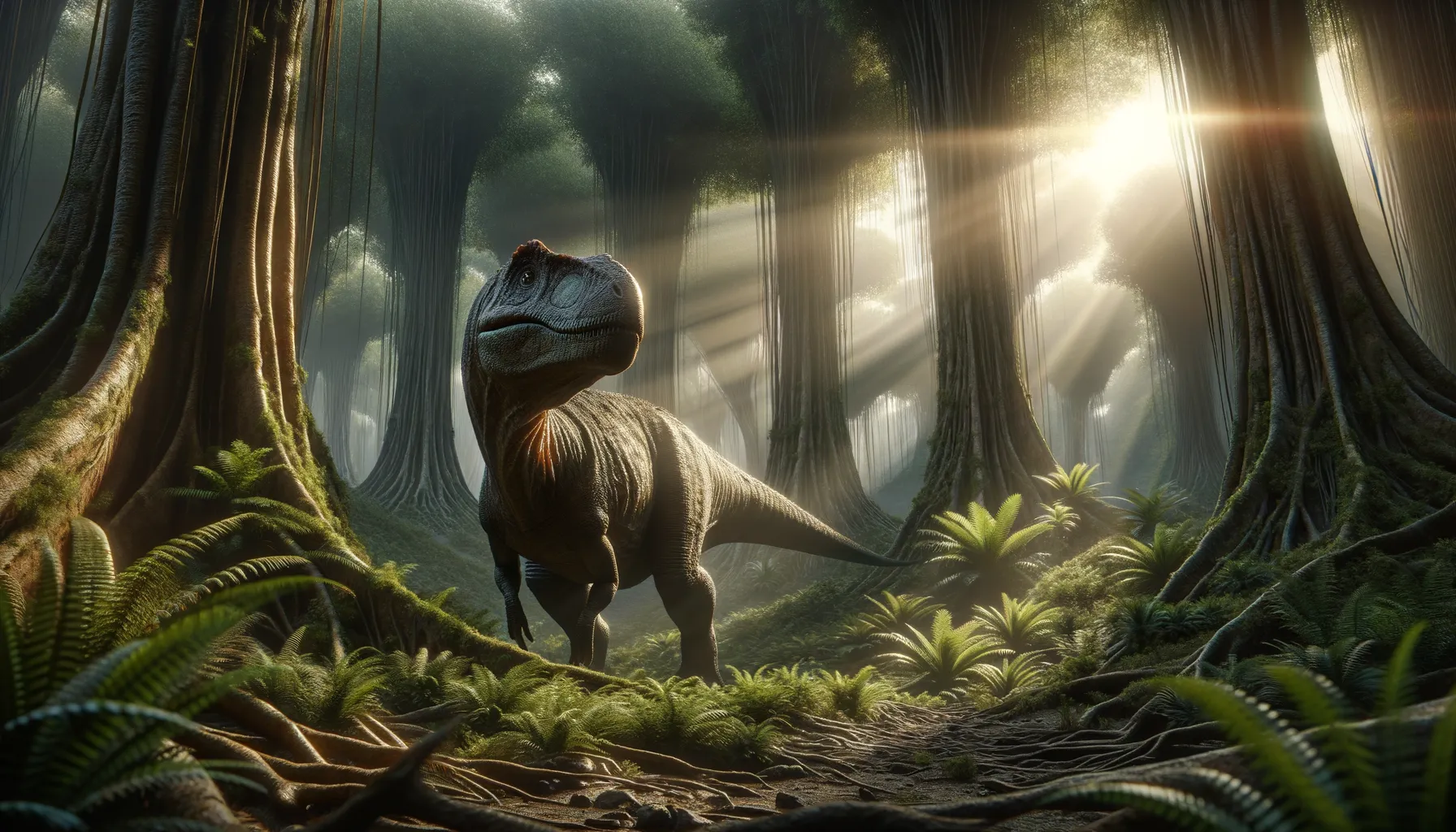
Micropachycephalosaurus
Tiny titan with a thick skull!
Period
Cretaceous
Length
Roughly 1 meter (3.3 feet) long.
Height
About 0.5 meters (1.6 feet) tall.
Weight
Approximately 10 kilograms (22 pounds).
Micropachycephalosaurus, a small, herbivorous dinosaur from the Late Cretaceous, is known for its dome-shaped skull. It is among the smallest of the pachycephalosaurs, a group characterized by their distinctive thickened cranial bones. Its fossil remains, though few, have provided insights into the diversity of dinosaurs in Asia during this period.
Diet
Micropachycephalosaurus was an herbivore. Its diet likely consisted of low-lying plants, such as ferns and cycads, that were abundant in its environment. Its teeth suggest it was well-adapted to chewing tough vegetation.
Hunting
As a herbivore, it did not hunt in the traditional sense. Instead, it foraged for plants using its beak-like mouth. The absence of features related to predation supports its role as a plant-eater.
Environmental challenges
During the Late Cretaceous, Micropachycephalosaurus faced challenges such as varying climates and competition for food with other herbivores. Additionally, the presence of large predators required it to be cautious and possibly hide among vegetation to avoid detection. These factors influenced its daily activities and survival strategies.
Speed
Likely slow, suitable for a small herbivore.
Lifespan
Estimated around 10 to 20 years.
First discovery
First discovered in 1978 in Shandong, China.
Fun Facts
- Micropachycephalosaurus holds the record for one of the longest dinosaur names, which means 'tiny thick-headed lizard'.
- Despite its name, there's no clear evidence Micropachycephalosaurus had the thick skull dome seen in other pachycephalosaurs.
- It lived approximately 84 to 70 million years ago during the Late Cretaceous period.
- Micropachycephalosaurus was a small herbivore, likely feeding on plants and possibly insects.
- Fossils of this dinosaur were first discovered in Shandong Province, China, in 1978.
- Scientists believe Micropachycephalosaurus was a fast runner due to its lightweight and small size.
Growth and Development
Micropachycephalosaurus experienced growth typical of small dinosaurs, reaching adulthood over several years. Its dome-shaped skull thickened as it matured, a process thought to be linked to social behavior or species recognition. Juveniles likely had less pronounced cranial features which developed as they aged.
Habitat
Micropachycephalosaurus lived in forested areas and grasslands of what is now eastern Asia. These habitats provided ample vegetation for food and cover from predators. The dinosaur adapted to seasonal changes in its environment, possibly migrating short distances in search of resources.
Interaction with other species
Micropachycephalosaurus coexisted with various other dinosaur species, both herbivorous and carnivorous. While competition for food might have occurred with other small herbivores, its small size and ability to hide facilitated its survival. Interaction with predators likely influenced its behavior and life strategies.
Natural lifespan
It is believed to have had a lifespan similar to other small dinosaurs, around 10 to 20 years.
Reproduction
This dinosaur likely laid eggs, similar to other species of its time. Nesting behavior might have included creating simple nests on the ground. Parental care, if any, is speculative, but it may have involved protecting the eggs and young hatchlings until self-sufficient.
Social behaviour
Micropachycephalosaurus may have been a social creature, possibly forming small groups for protection. Its thick skull suggests potential intraspecies competition, likely for mates or territory through head-butting matches. Such behavior could also help establish dominance within social structures.
Fossil locations
Micropachycephalosaurus fossils have been found primarily in the Shandong Province of China. The limited fossil record makes it difficult to determine a broader geographic range. Discovery in Asia highlights the continent's significant role in dinosaur diversity and evolution during the Cretaceous period.
